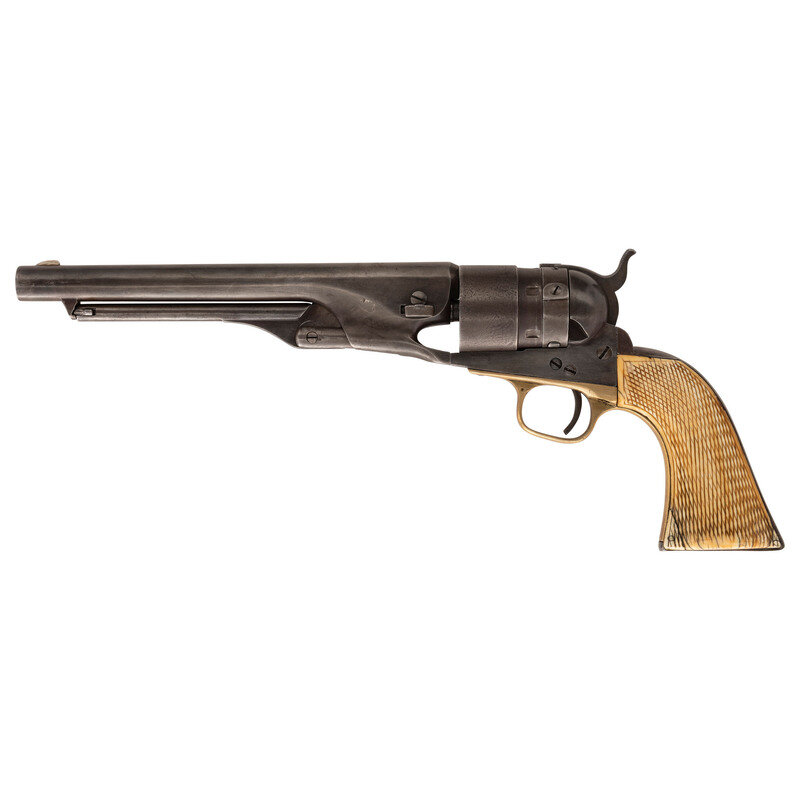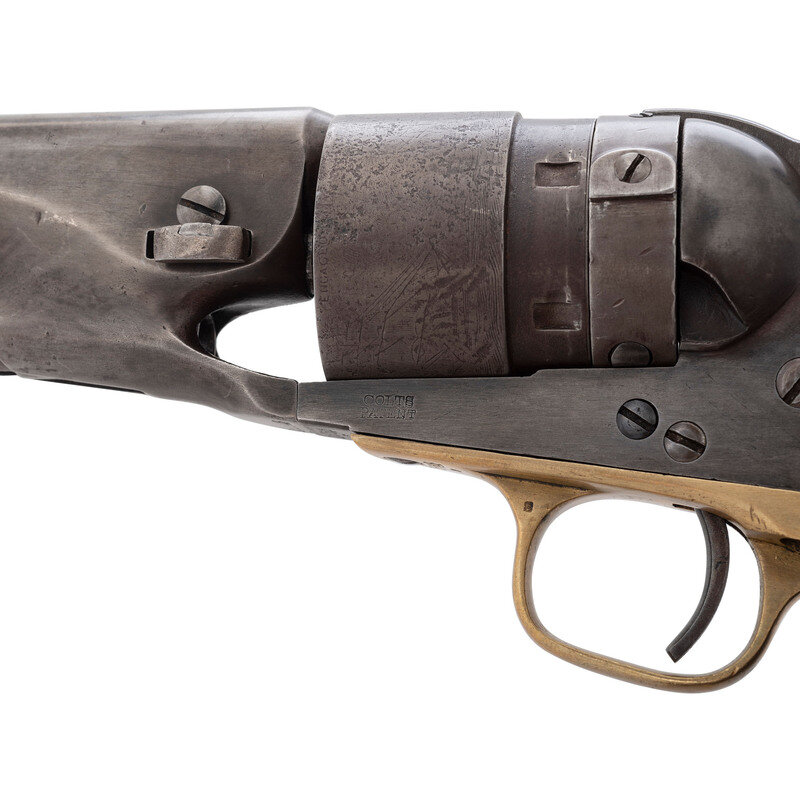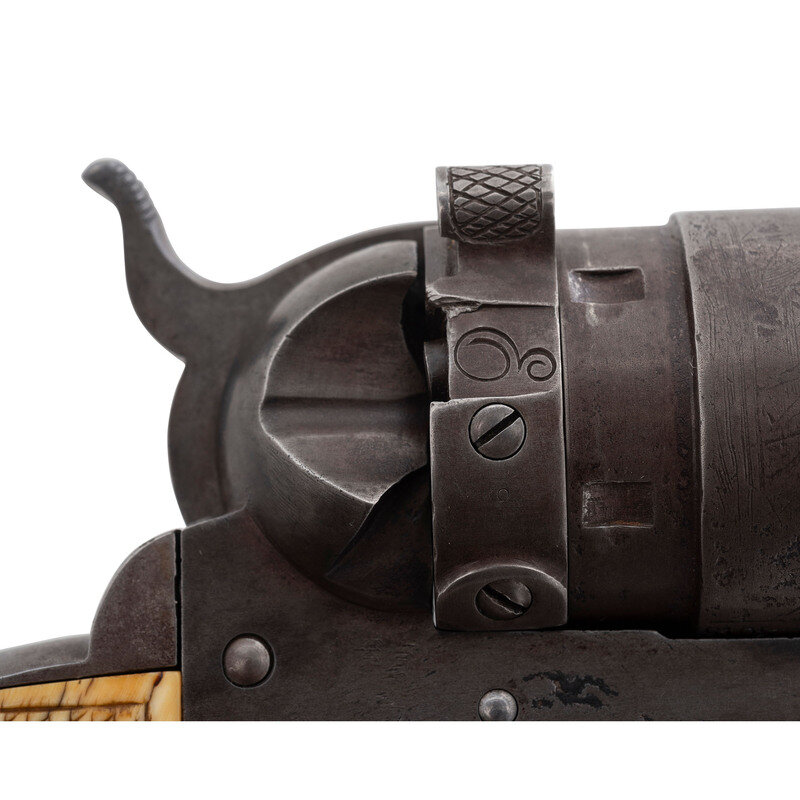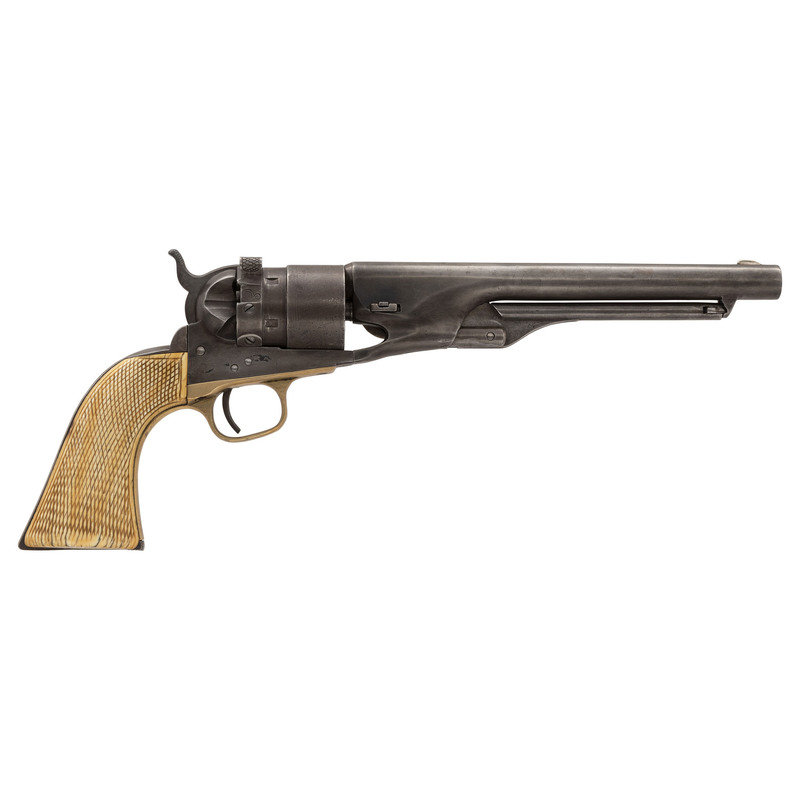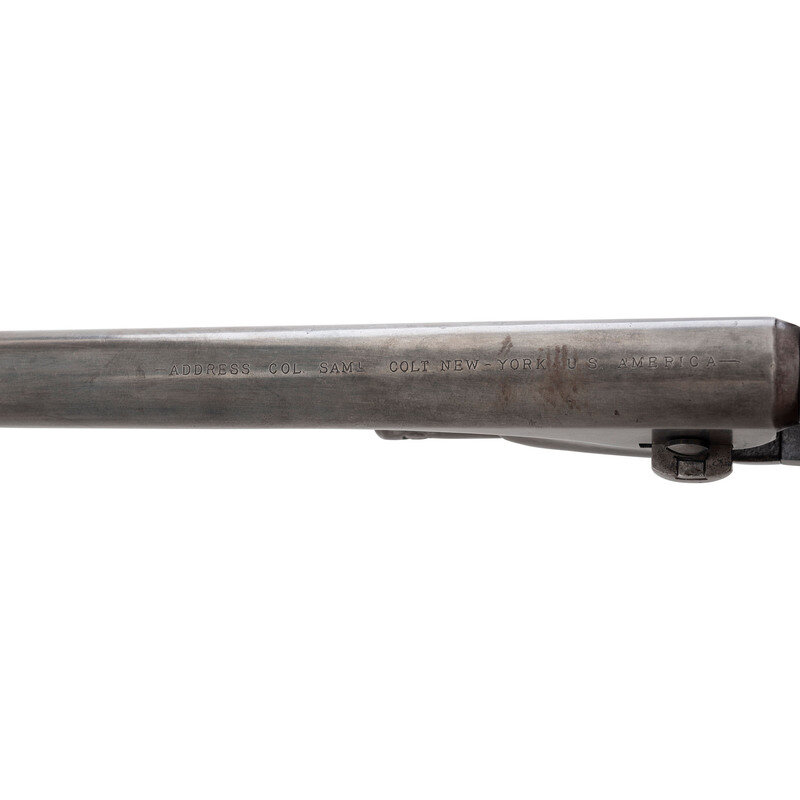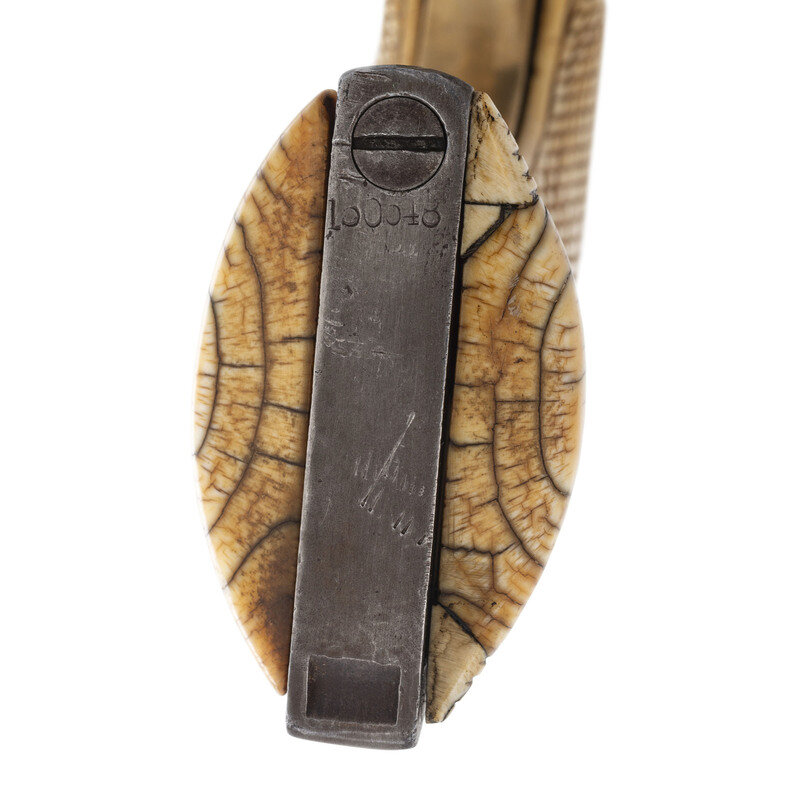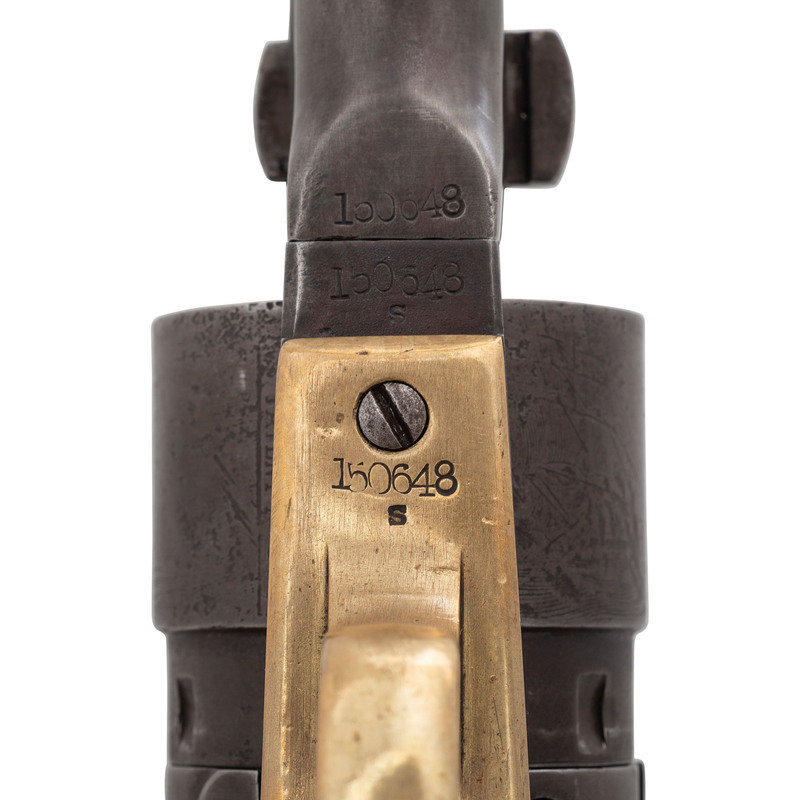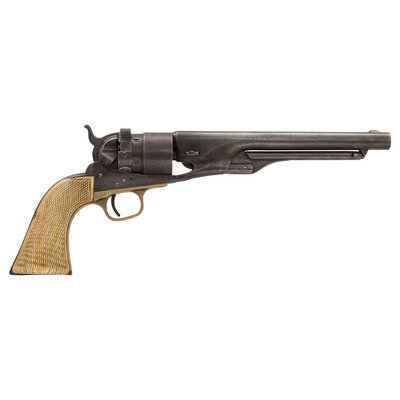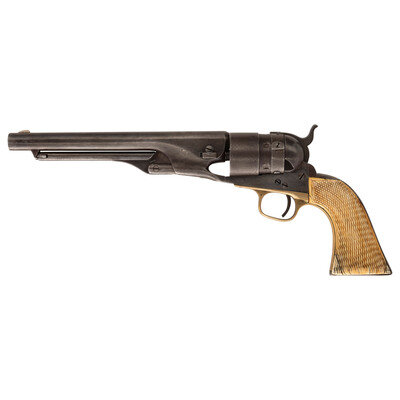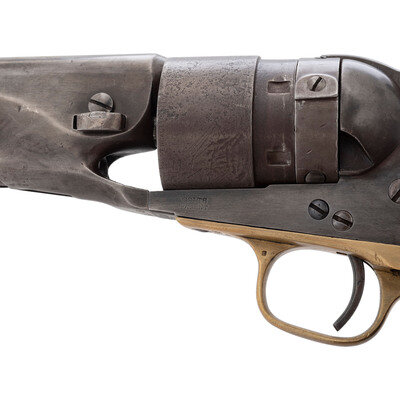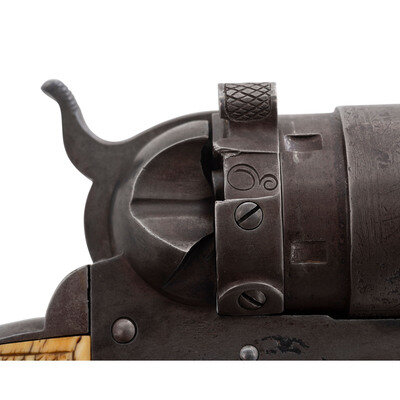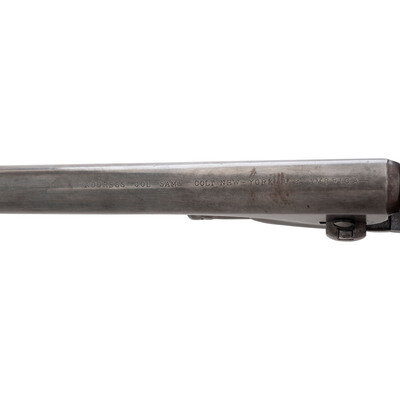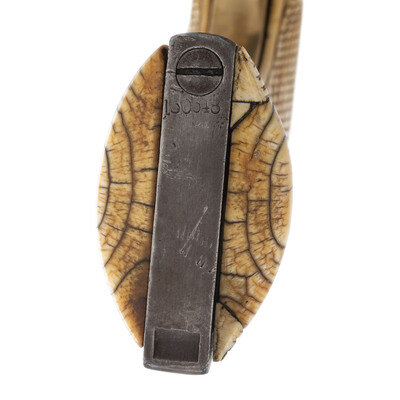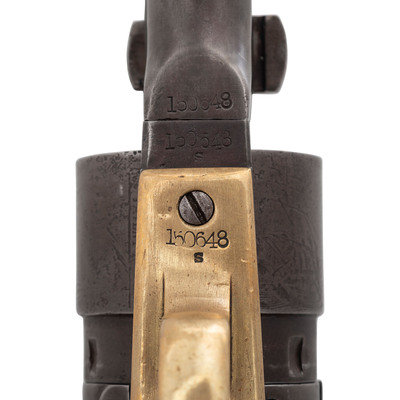.44 Thuer Army. 8" barrel length. SN: 150648. (Mfg. Ca 1864 and converted later) Blued metal finish with casehardened frame, steel backstrap, brass triggerguard, and checkered ivory grips. Single-action front loaded cartridge revolver converted from percussion using the Thuer patented system. The left frame is struck COLT'S/PATENT with the barrel address reading -ADDRESS COL. SAML COLT NEW-YORK U.S. AMERICA-. Item features the drilled and tapped plunger designed to accept the Thuer priming punch, and a standard loading channel consistent with the Hartford Thuer conversions. The recoil shield and backstrap are cut for mounting a stock. The revolver shows martial inspection initials to numerous parts including S initial to the triggerguard bow, below the triggerguard serial number, and on the frame. A B initial appears on the inside of the backstrap. The recoil shield and cylinder are both struck R on their forward faces. The serial numbers match on the frame, gripstraps, arbor pin, and barrel. The cylinder is numbered 3015, and the wedge pin 0565. The grips are numbered 139254 on the wood core. The number 2-8 has been struck into the rear face of the barrel lug. Revolver displays an engraved E mark over the ejector position on the conversion ring. The hammer screw and wedge pin screw both show faint concentric rings consistent with modern replacements. Colt employee F. Alexander Thuer began working out the basic premise of the patents that made this item possible as early as 1866. At that time, the Rollin White patent on bored through cylinders prevented various American manufacturers from producing cartridge revolvers. Thuer's design evaded the patent through the use of a tapered case that was loaded from the front. The rotating conversion plate could be set at one of three positions: the fire position in line with a separate firing pin, a safe setting where the hammer rests behind the knurled boss on the conversion ring, and finally the ejector setting that used the hammer strike acting on an ejector to kick spent casings forward and out of the cylinder. Colt offered Thuer conversions for its major percussion models from 1868 as late as 1872, yet fewer than 5,000 of all types were manufactured. A rare example of a firearm that artfully sidestepped the infamous Rollin White patent and helped launch Colt into the manufacture of cartridge guns.

